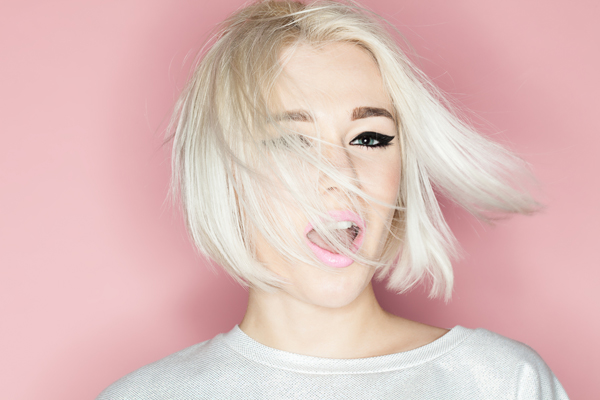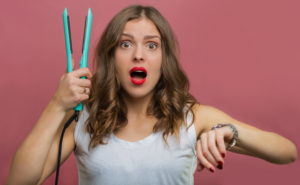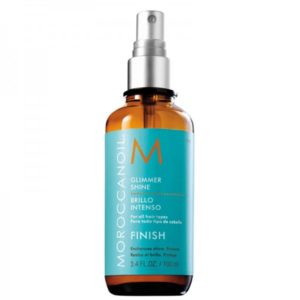It’s fair to say we all know the differences between a shampoo, conditioner and masque, but there are so many products out there these days that it can be hard to keep up. To be honest, with so many ‘revolutionary’ products being released it can be confusing to know which ones are right for you and how you should be using them. Ever wondered what exactly dry shampoo is and how it works? I’m sure you’ve pondered the difference between pomade and hair oil?
Your hair products are the first and most important step to achieving a desired look or hairstyle. Without the correct hair care products, you can kiss that beachy wave look goodbye. So let’s go back to basics and run down the basic hair products every girl should have and know how best to use them. That’s healthy hair guaranteed right there.
- Shampoo
We all know what shampoo is - simply put, it cleanses the hair. But here's where it gets tricky: there are so many different types of shampoos out there. From clarifying shampoo to volumising shampoo, smoothing, sulphate-free, and shampoos for colour treated hair, it's important to choose the type of shampoo that is best suited to your hair.
CLARIFYING SHAMPOO
Clarifying shampoo roughens up the hair cuticle and gets the roots extra squeaky clean. This can be used when you feel that there is too much product build-up in your hair or before getting your colour done. Try Moroccanoil Clarifying Shampoo.
VOLUMISING SHAMPOO
This baby is designed to open up the hair cuticle and make it thicker. In order to get the root lift you desire, try to pick a shampoo with a lightweight conditioning ingredient that rinses off well and doesn't weigh the hair down. I love Kérastase Resistance Volumifique Bain 250ml
SHAMPOO FOR COLOURED HAIR
If your hair is coloured, I would always recommend to go for a shampoo specifically designed for colour treated hair. It really is the secret to avoid colour fade. Remember – you’ve spend ££s on getting your hair the right shade, it would be a real shame to waste that by using the wrong shampoo. Great hair products for coloured hair will also include ingredients like oils or algae, in order to lock in colour. Give Redken Colour Extend Magnetics Shampoo a try.
SULPHATE-FREE SHAMPOO
Sulphate-free shampoos fit into the same category as those for colour treated hair, but are more specific than that. They are perfect for those with delicate colours, like reds or pastel tones and will help avoid that sinking feeling when you see all your colour being washed down the drain as you shower. I always recommend Kérastase Discipline Bain Fluidealiste Sulphate Free to my clients.
Whichever shampoo you choose, be sure that it's right for the texture of your hair. If you choose a shampoo that's too clarifying, you could strip the hair of its natural oils, and lead to additional oil being produced. If you choose a shampoo that's too moisturising, you could end up with product build-up at the scalp. If you're not sure what type of hair you have, you can always consult your hair stylist for a recommendation.
Also, be sure to choose two "go-to" shampoos that both have different ingredients and benefits to rotate between, to maintain balance in your hair. Switch your shampoo every 4 to 5 washes to remove product build-up and restore cleanliness to your hair.
- Conditioner
Conditioner is designed to smooth your hair cuticle and restore moisture.
RINSE-OUT CONDITIONER
Rinse-out conditioners are the most common type of conditioner, worked through the ends of your hair, left in for a few minutes, and rinsed out. Avoid applying conditioner to the roots of your hair, as this could result in greasy looking roots and weigh your hair down. Try Bed Head Urban Antidotes Recovery Conditioner.
LEAVE IN CONDITIONER
Leave in conditioners are great for smoothing and de-tangling. These conditioners are light-weight, and can be used as a styling product to get your tresses silky and glossy.
HAIR MASKS
Hair masks or deep conditioners are perfect for repairing dry and damaged hair. Hair masks contain ingredients like waxes, oils and emulsifiers to get down to the root and repair the hair from its source. Most masks should be applied from root to tip and left in for at least 30 minutes before rinsing out thoroughly. I love Kérastase Nutritive Masque Magistral
Just be sure to avoid the common mistake of only rinsing out half your conditioner We all love that glorious, silky, smooth feeling conditioners leave, however, this means you haven't rinsed out all the product from your hair and you're actually weighing your hair down.
- Hair oils and serums
From argan to avocado oil, hair oil is a must for those with 'problematic' hair. They tame frizz, add shine, promote growth, and give your hair a high shine look. For best results, use hair oil on dry or almost dry hair. Top tip: if you have dry ends, use some oil on the mid-lengths and ends BEFORE washing your hair. This will stop you drying out your ends even more when shampooing.
- Dry Shampoo
Dry shampoo comes in either a powder or spray form, and is designed to absorb excess oil at the roots of the hair. Don't have time to wash your hair? No problem. Not only does dry shampoo get rid of excess oil, it also provides lift at the roots. Beware though, this is not a replacement for washing your hair so try to only use dry shampoo for a maximum of two days before giving your hair a good wash. Try Moroccanoil Dry Shampoo.
So there you have it…the basics to healthy and great looking hair. What are your hair product must haves?

 Step 5: When you have reached the top, comb back your hair to reveal your natural parting and repeat the technique. Dress using a dressing brush and a shine spray, such as MoroccanOil Glimmer Shine Spray.
Step 5: When you have reached the top, comb back your hair to reveal your natural parting and repeat the technique. Dress using a dressing brush and a shine spray, such as MoroccanOil Glimmer Shine Spray.






